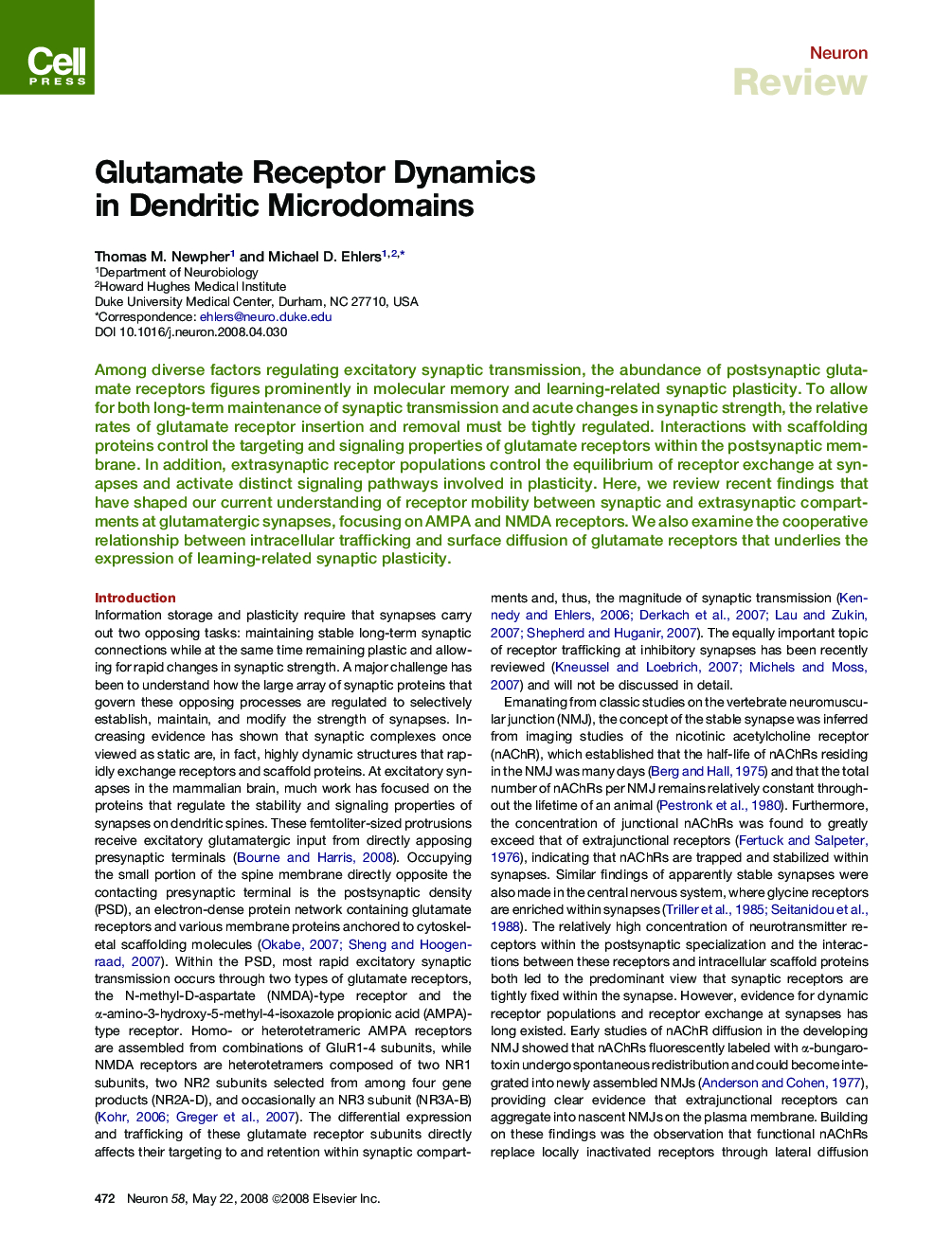| Article ID | Journal | Published Year | Pages | File Type |
|---|---|---|---|---|
| 4322366 | Neuron | 2008 | 26 Pages |
Among diverse factors regulating excitatory synaptic transmission, the abundance of postsynaptic glutamate receptors figures prominently in molecular memory and learning-related synaptic plasticity. To allow for both long-term maintenance of synaptic transmission and acute changes in synaptic strength, the relative rates of glutamate receptor insertion and removal must be tightly regulated. Interactions with scaffolding proteins control the targeting and signaling properties of glutamate receptors within the postsynaptic membrane. In addition, extrasynaptic receptor populations control the equilibrium of receptor exchange at synapses and activate distinct signaling pathways involved in plasticity. Here, we review recent findings that have shaped our current understanding of receptor mobility between synaptic and extrasynaptic compartments at glutamatergic synapses, focusing on AMPA and NMDA receptors. We also examine the cooperative relationship between intracellular trafficking and surface diffusion of glutamate receptors that underlies the expression of learning-related synaptic plasticity.
